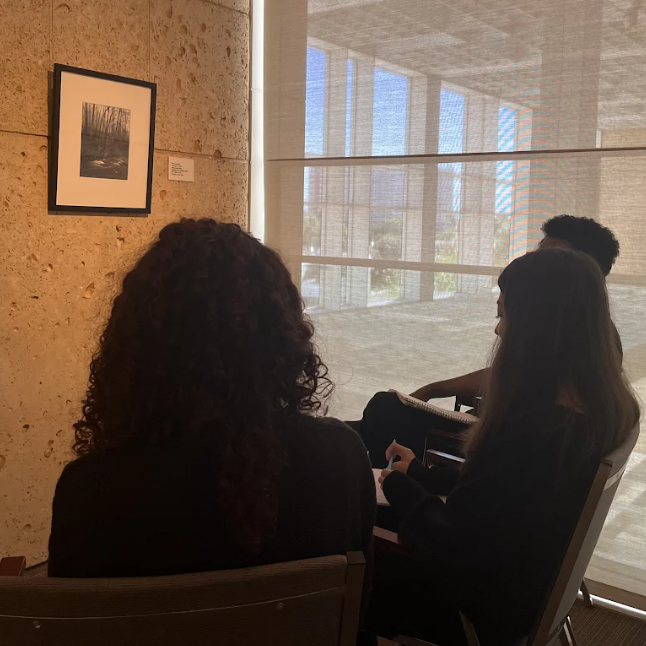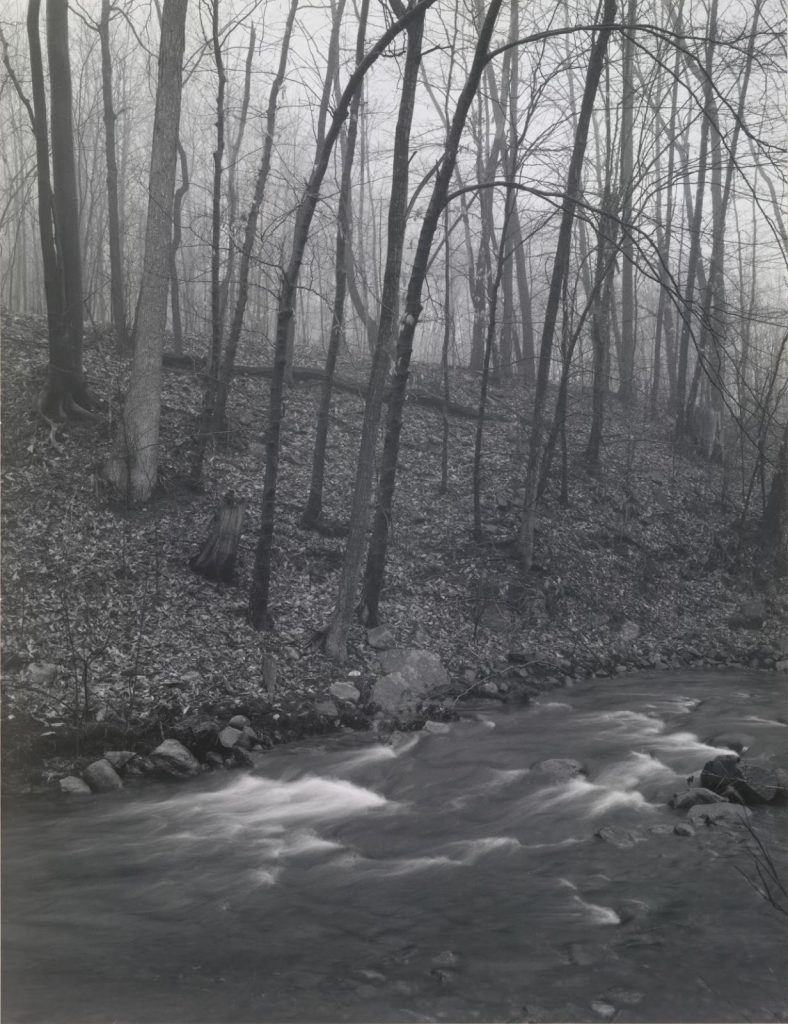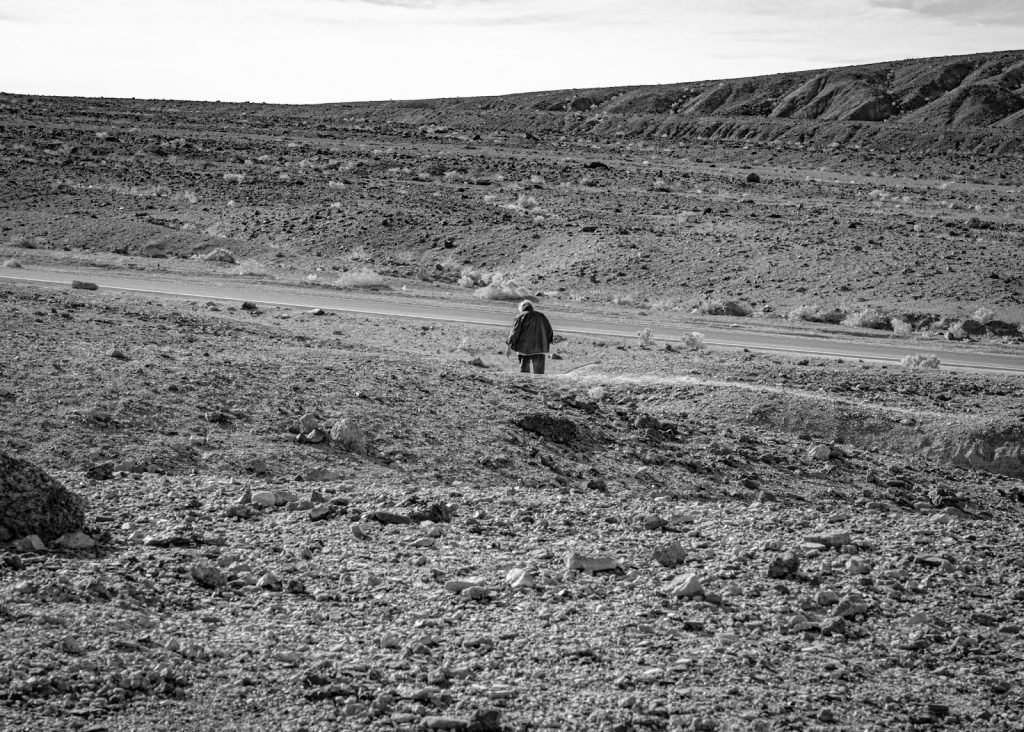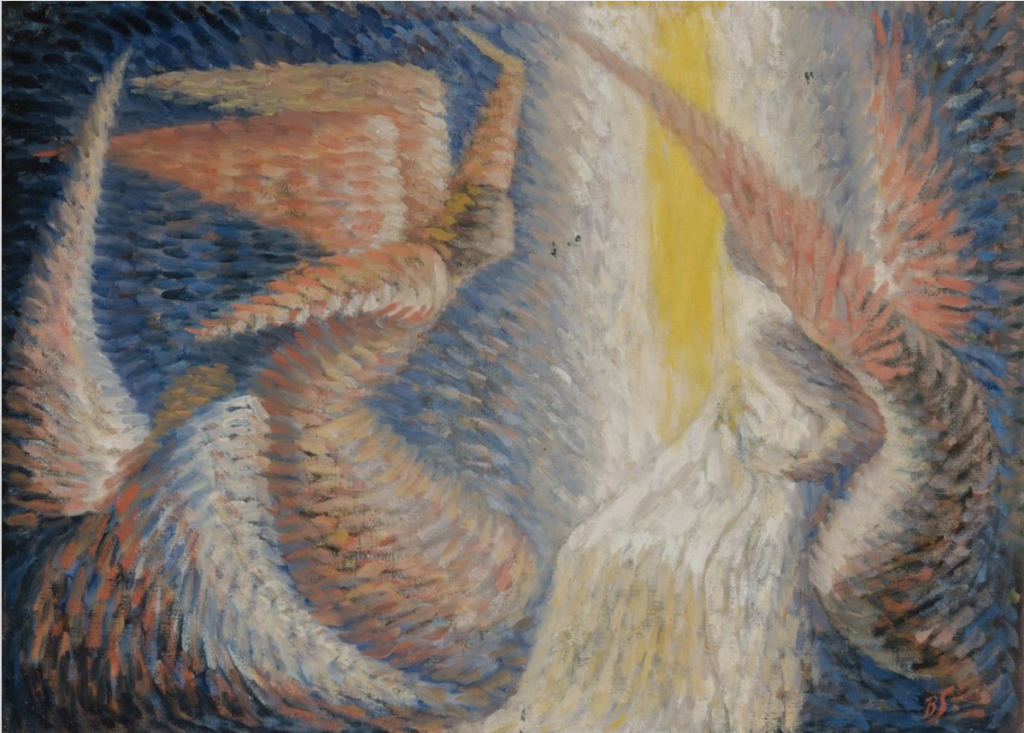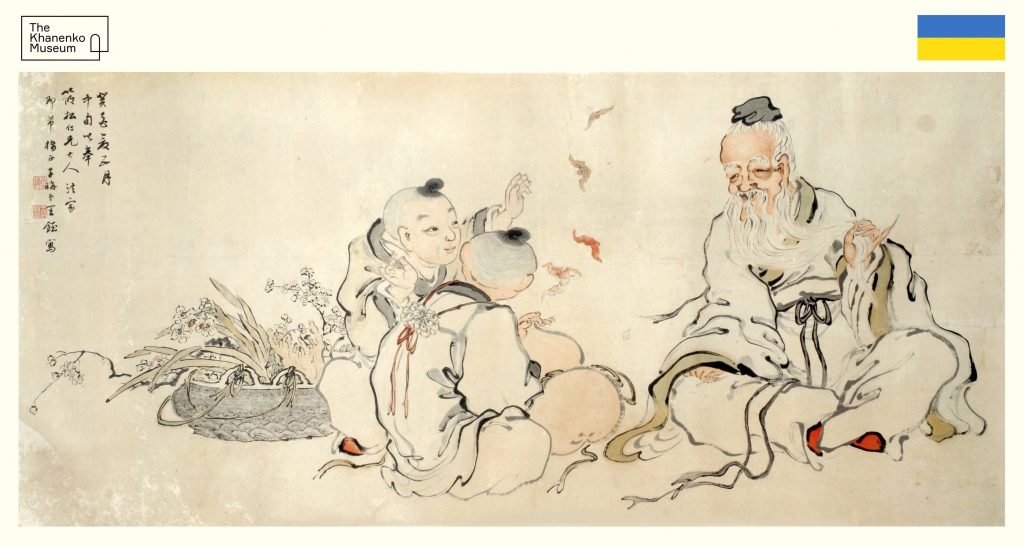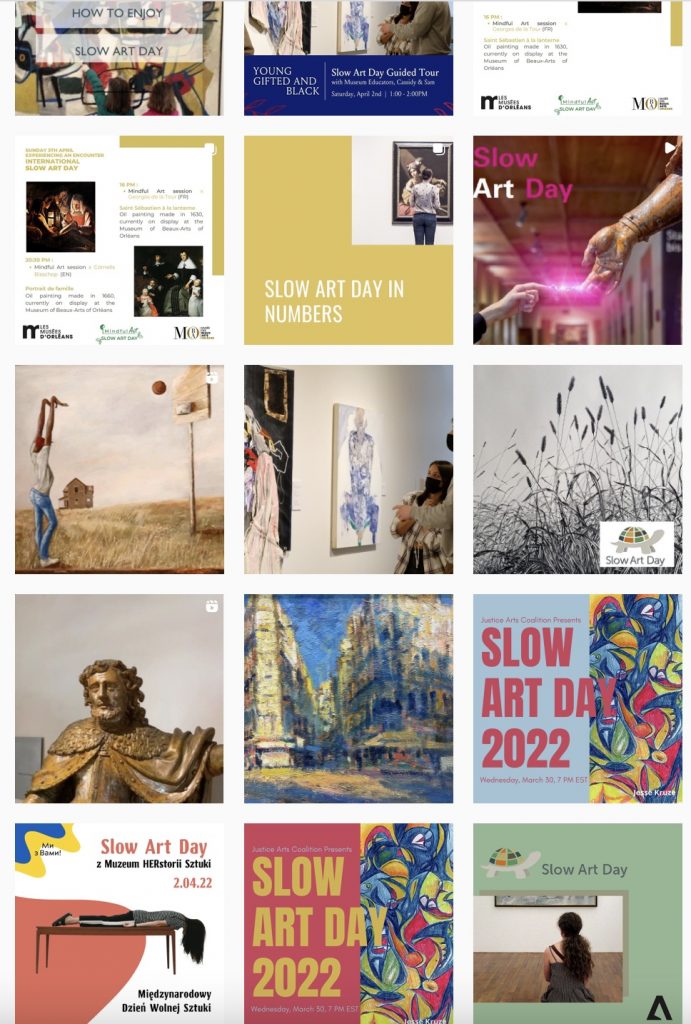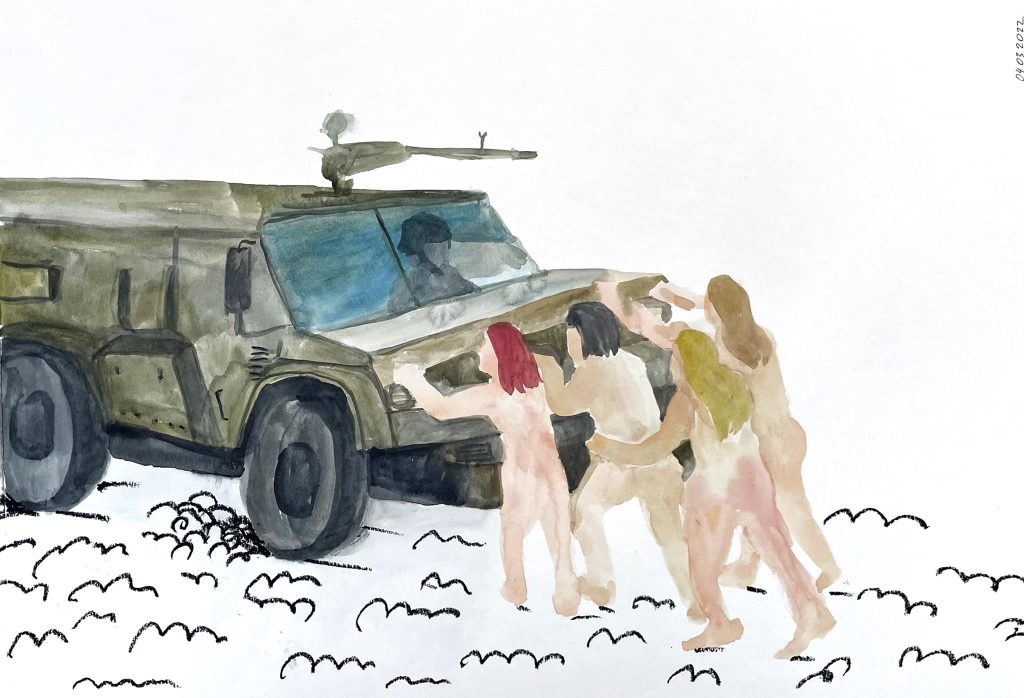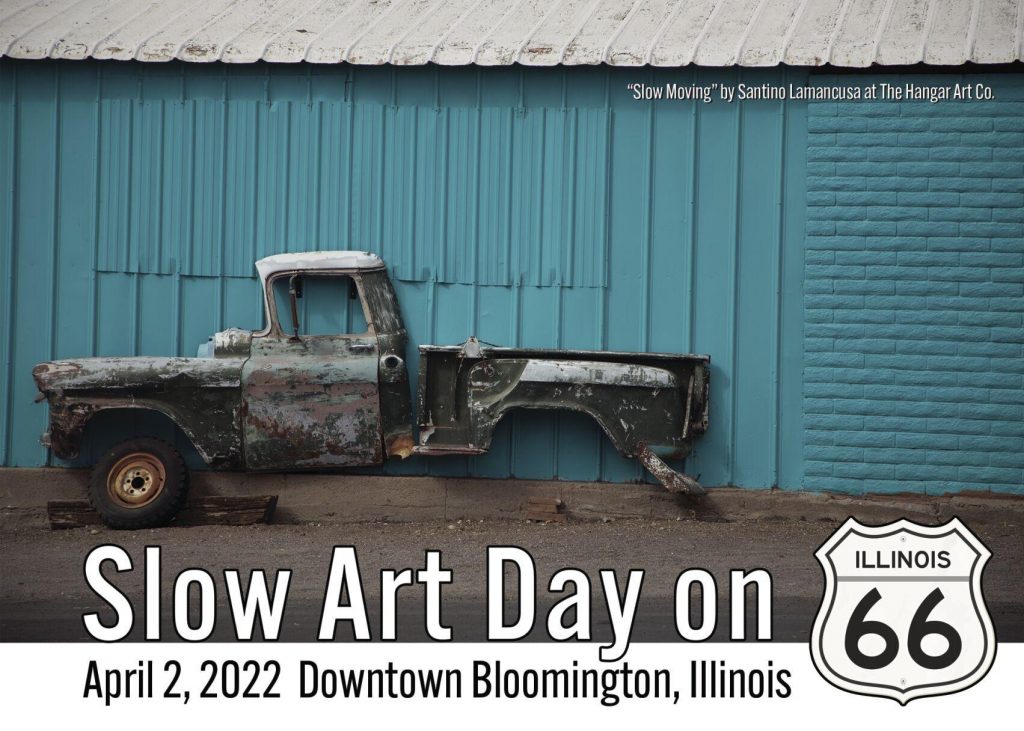For their fourth Slow Art Day, Philadelphia’s Magic Gardens invited guests to slow down and enjoy the immersive indoor and outdoor mixed media art environment created by artist Isaiah Zagar. The winding spaces are covered in mosaics created with Zagar’s handmade tiles and found objects, such as folk art, bottles, bike wheels, and mirrors.
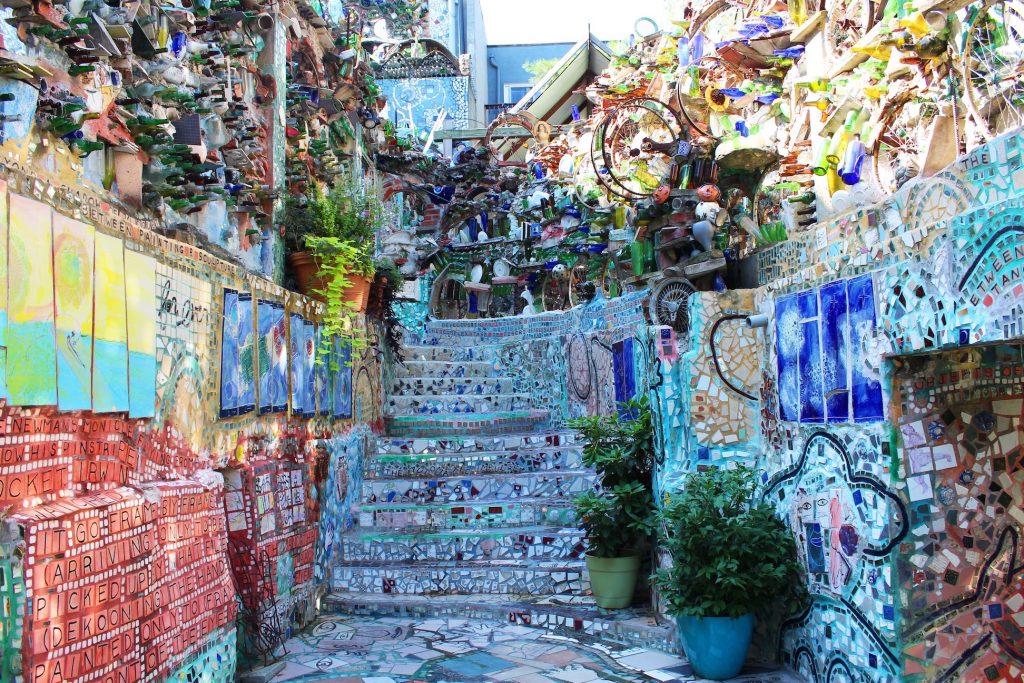
Zagar’s art can also be seen on public walls throughout the south Philadelphia community, where he has been restoring and beautifying public spaces since the 1960s.
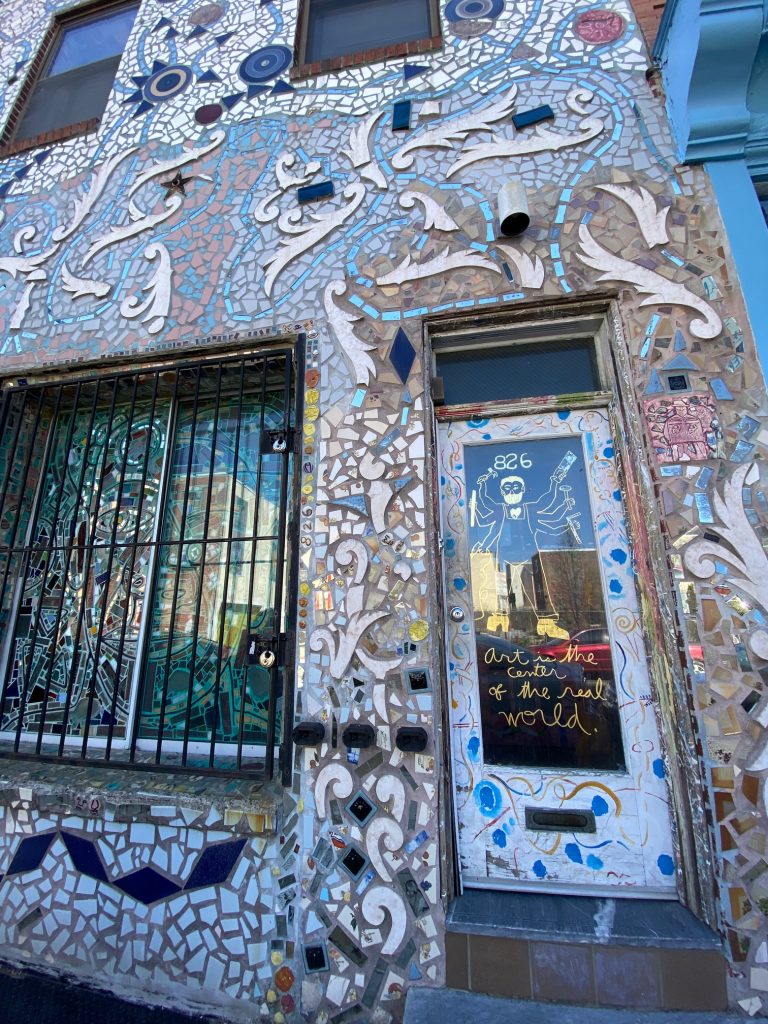
After slowing down to take in the details of the space, Samantha Eusebio, Museum Educator, led a discussion on a particular section of the outdoor sculpture garden that included several large handmade tiles that Zagar made during a residency he held at the Kohler company in Wisconsin from September to November, 2001.
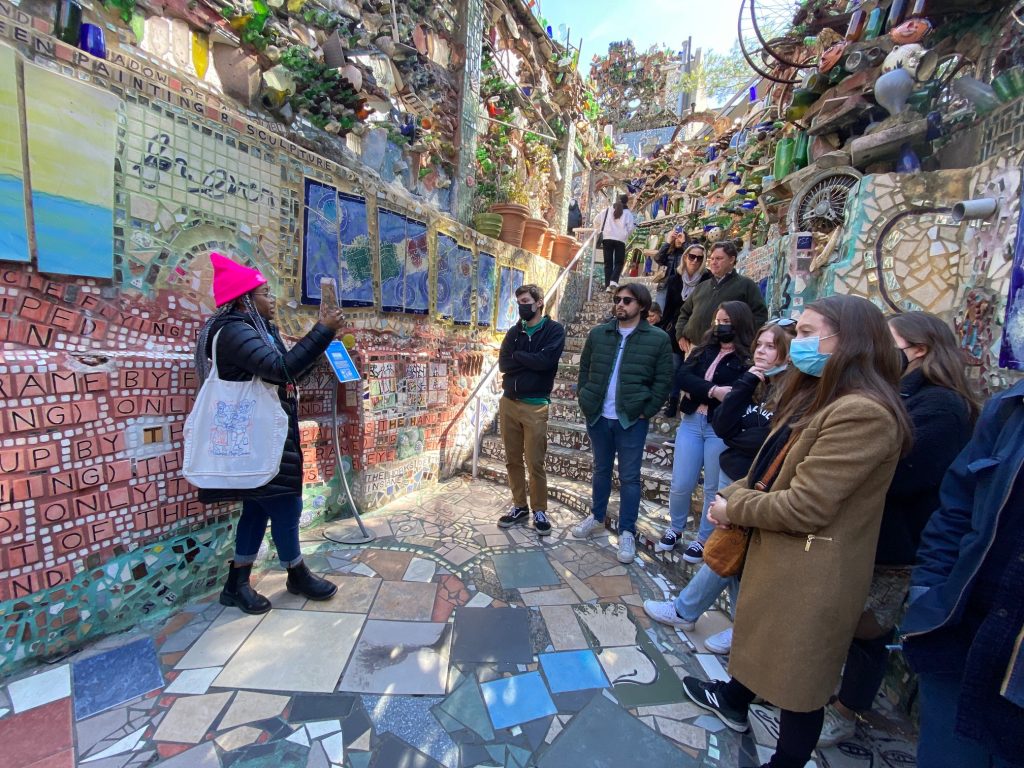
Samantha first asked the group of 15 participants to share themes that they noticed emerging within the tiles. She then shared a video interview of Zagar talking about his experience at Kohler.
After the video, Samantha led a discussion about Zagar’s influences for the large tiles, which happened to be the events of 911 that occurred while he was in his residency at Kohler. Being raised in Brooklyn, NY, Zagar was heavily influenced by the tragedy, and his tiles include images of airplanes and buildings. Samantha continued the discussion with the group on different ways individuals deal with grief and trauma – through art, reading, exercise, or even just slowing down.
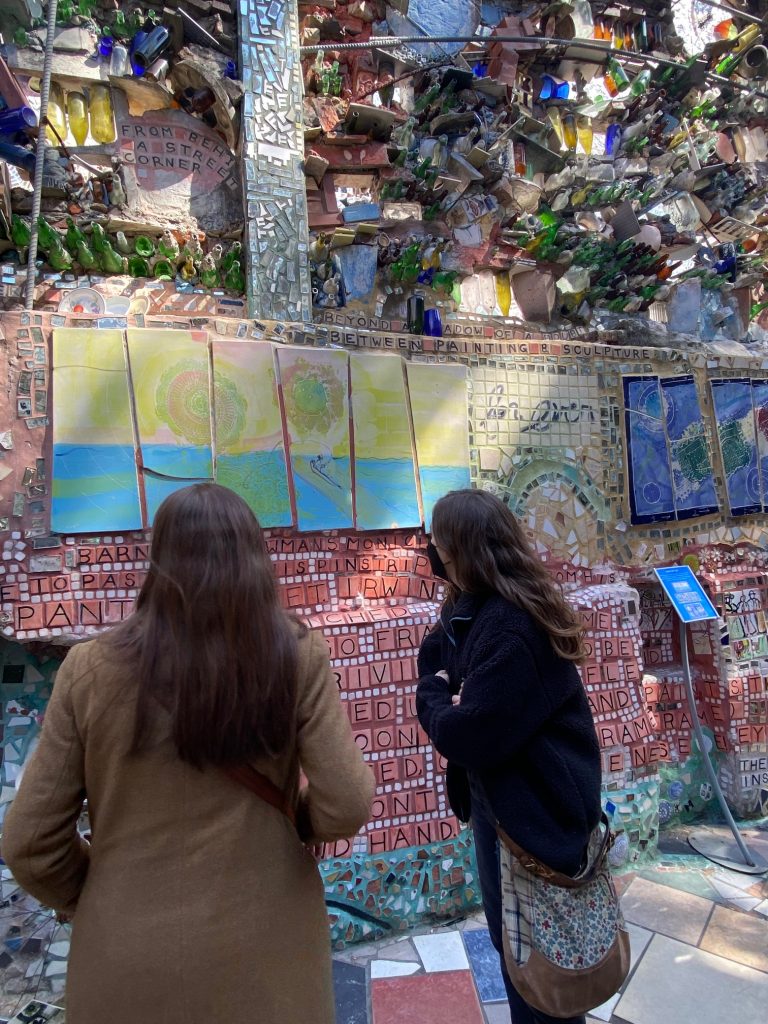
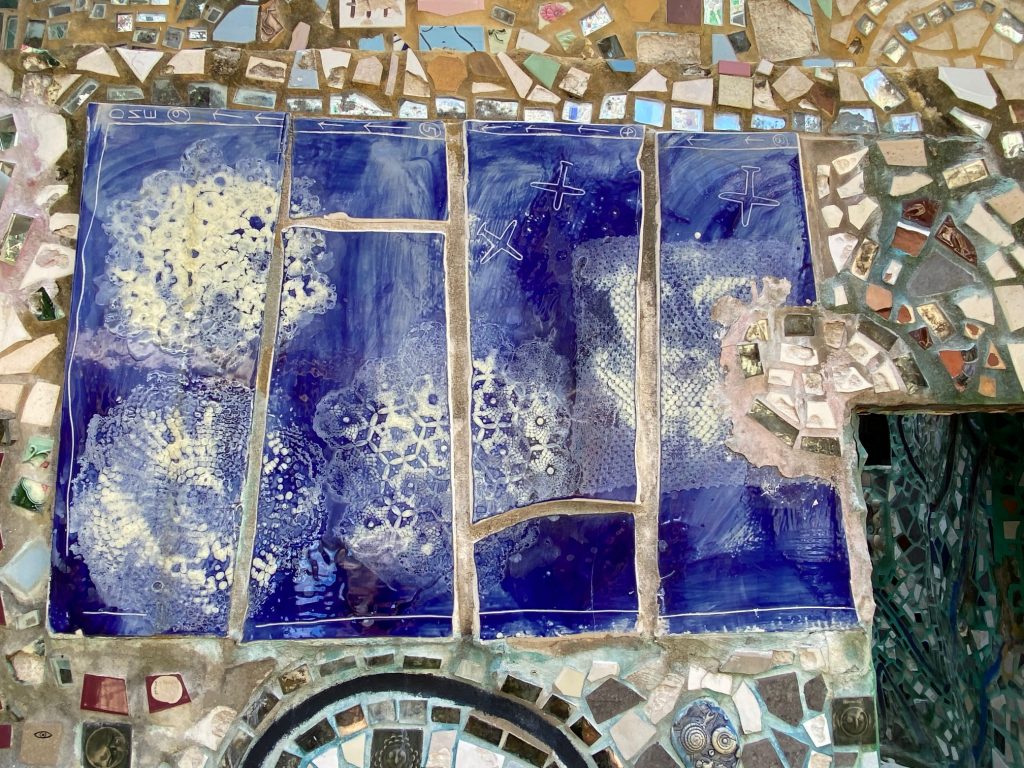
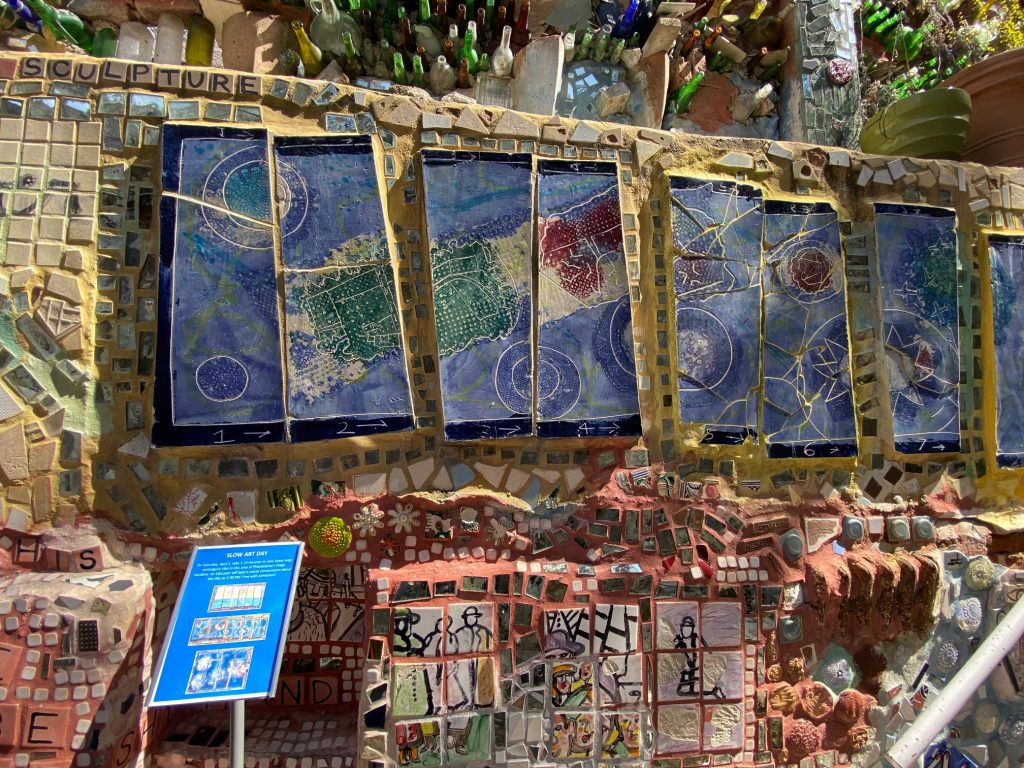
Large Tile Mosaics with Airplane Motifs by Isaiah Zagar. Photo by Ashley Moran.
I had the pleasure of attending this Slow Art Day event, and it was eye opening. Even though I know that slowing down helps you see things that you are otherwise blind to, and even though I’m a longtime Slow Art Day volunteer who teaches many others about the power of slowing down to really see, I was still surprised by how much I saw that I had never seen before on multiple previous visits to The Magic Gardens. This is why Slow Art Day is an experiential program, and not primarily a theoretical one. You can understand the theory behind slow looking, but that doesn’t mean that you can see until you really slow down.
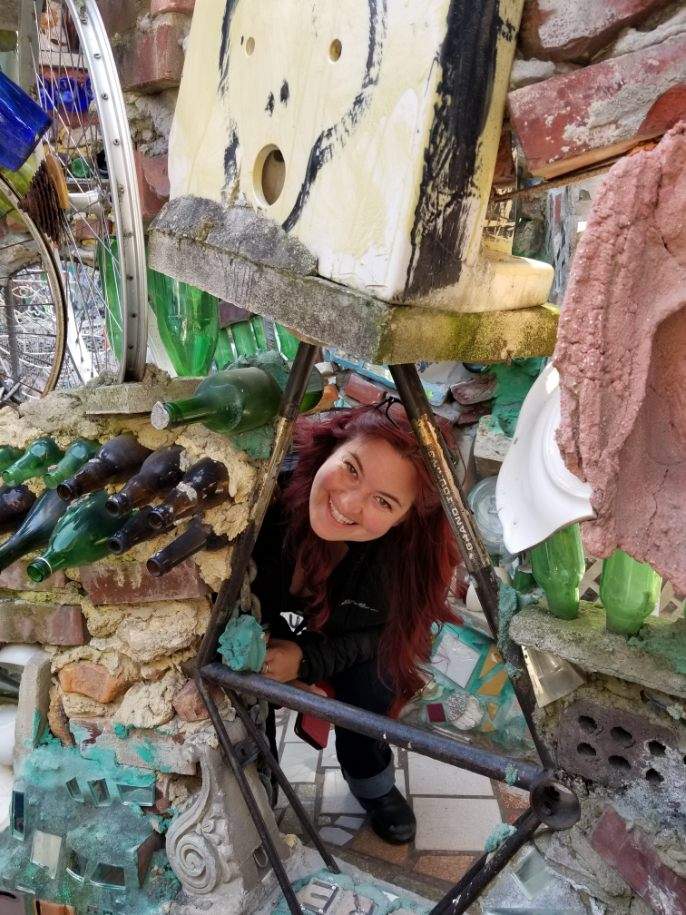
It truly is amazing what you can experience if you take the time to slow down.
We at Slow Art Day HQ look forward to visiting Philadelphia’s Magic Gardens while on our tour this summer of NYC and Philadelphia, and we can’t wait to see what they share for Slow Art Day 2023.
Ashley

